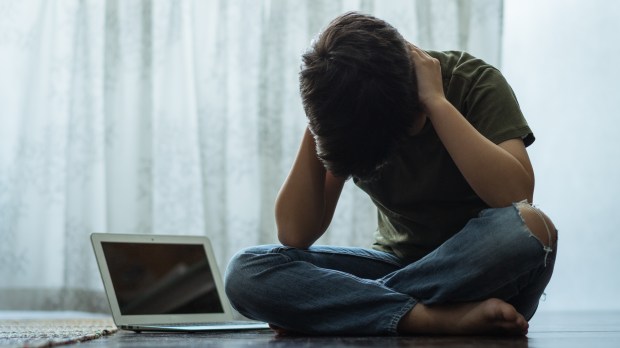Today in the United States, profits from pornography out-gross those from ABC, CBS, and NBC combined; estimates are that porn is a 12 billion dollar industry. One in five mobile searches are for pornography. Since 2016, 17 states have introduced resolutions declaring pornography as a public health crisis.
Whereas in previous decades, the major threats were print, video, and live options for skewed sexuality, the internet and mobile devices have made accessing pornography just a click away. As a child psychologist, I am increasingly working with younger and younger youth who acknowledge that porn has negatively impacted their lives.
As I discuss various ways to reduce the risk of pornography, it is imperative to first address what I often hear from well-intentioned, but exasperated parents on this topic. It goes something like this: “I really don’t want my son or daughter to be exposed to illicit material, but it’s probably going to happen anyway so why exhaust the efforts and safeguards to prevent the inevitable?”
Although understandable, my response is this: While the chances of our youth being exposed to pornography at some point in their lives is high, there is a huge difference in the neurological and psychological development when it comes to the frequency, intensity, and duration by which someone is exposed. In other words, incidental exposure at different times, while still sad and potentially harmful, has nowhere near the risk potential as repeated, intense exposure when it comes to long-term outcomes. It is critical that parents recognize this difference.
I want to briefly focus on what I feel are 3 major categories of safeguards when it comes to pornography.
Technical
The technical safeguards are no substitute for the other protections, but they do provide certain options to reduce the risk, at least while our children remain in our home.
The first involve safeguards for phone and internet usage, which are increasingly available (often for free) to parents. As an example, Verizon Smart Family allows parents to turn off internet capabilities and even texting/calls even when Wi-Fi is available along with having a content filter.
Covenant Eyes is one internet filter that can block illicit sites, monitor devices for searches, and send reports to parents of activity. While not perfect, they do provide a reasonable safeguard as a starter.
Beyond these safeguards, it is critical that parents never give passwords to their offspring, which may allow the purchase of illicit content. Legislatively, the Children’s Online Privacy Protection Act (COPPRA) largely forbids children under 13 for giving out private information, and many social media sites do not allow preteens to use their platforms; parents should be aware and armed with legalities designed to protect their kids.
Parents should also know of apps and websites where kids are increasingly headed, some of which (like the infamous calculator app) allow them to bury explicit material on their devices.
Furthermore, if parents aren’t aware of proxy servers and the dark web, it is critical to educate yourself about awful yet real threats that exist on the internet.
Finally, it should be noted that the biggest threat of all for pornography exposure involves giving youth devices when they are simply not intellectually and neurologically prepared for this massive responsibility.
Environmental
Much of the pornography exposure that occurs is not random by nature. Although incidental viewing can happen at any time, young people who spend time with devices outside of a public place are at increased risk.
Having a device, especially a personal phone, in the bedroom at night has been shown as a tempting factor for porn usage. As I have heard more than one teen tell me, it was this particular scenario by which he consumed most of the pornographic material.
Parents who are serious about limiting porn usage also must be serious about where devices are allowed to be in their homes.
Furthermore, it has also become clear that “soft porn” usage is a gateway to more deleterious, deviant exposure. By “soft porn,” I mean TV, movie, and internet video/pictures that clearly depict individuals and scenes that are immodest, exploitative, and misogynist in nature.
Just like early alcohol usage, kids who are allowed by parents to view more of this content, especially without accompanying guidance and conversation, are more likely to seek out pornography in their future. When youth see that parents implicitly sanction this material, they are more likely to see pornography as acceptable content.
Cognitive
Finally, and maybe most importantly, are the ways that we cultivate our young people’s attitudes about the human body and sexuality.
For starters, it is critical that as our kids grow up, the body and sexuality are both seen as beautiful gifts given the respect and awe they deserve. Failure to acknowledge and celebrate this reality sets the stage for a skewed view by which they’re both seen as commodities to be consumed, and not blessings to be preserved.
Yet beyond promoting a reverential attitude, it’s just as important that our youth recognize how we as their parents can provide beauty for each other. I am convinced that children who see their parents who value being agents of beauty and attraction for each other, thus providing maybe the best defense against the seeking out of pornography, will be less likely to seek out unhealthy sources of pleasure, and not just of a sexual sort.
Very often, as spouses and significant others grow older together, various factors create a situation in which it seems they put less emphasis in being a healthy agent of attraction for each other in ways that often existed early in their relationship. While understandable for many reasons, it unintentionally sends a message to all (including kids) that pleasure and beauty are increasingly unavailable in this relationship, and must be sought in other ways.
This is not a justification for pornographic seeking, but I do believe it’s an important factor to consider. In the end, there is little substitute for kids seeing their parents still attracted and excited for each other as they, too, begin to consider their own attractions and romantic interest.
Pornography is a complicated, serious issue that that we simply can’t ignore. Sadly, it distorts the reality that sexuality is one of the greatest gifts we’ve been given. Which means that how we treat it is of the greatest importance, too.


